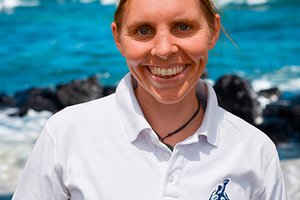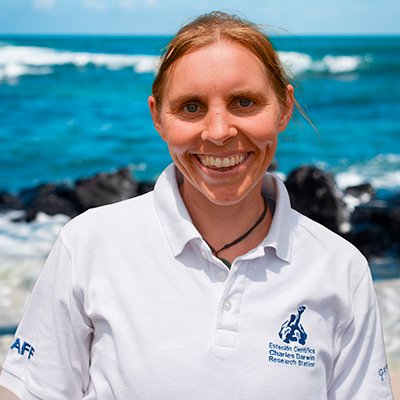
Written in collaboration with Daniela Vilema.
The mangrove finch (Camarhynchus heliobates) is a critically endangered species with a population estimated at 100 individuals with fewer than 20 breeding pairs. The survival of this species in the wild is threatened due to the parasitism of nestlings by the larva of the introduced fly Philornis downsi, which feeds on the blood of the chicks when they are in the nest. Despite the research that has been carried out, there is still no viable control for this fly to protect mangrove finch nestlings in situ, therefore the species continues to be at serious risk. In order to protect nestlings from P. downsi parasitism, since 2014, the Charles Darwin Foundation and the Ministry of Environment through the Galapagos National Park Directorate in collaboration with San Diego Zoo Global and Durrell Wildlife Conservation Trust have conducted head starting. This consists of collecting eggs or nesting chicks in the field raising them in a laboratory at the Charles Darwin Research Station and releasing the juveniles when can survive on their own.
Each year, the head starting season begins in February when eggs are collected from the wild on Isabela, where the only population of this species can be found. The Mangrove Finch Project team is responsible for rearing chicks at the Research Station facility, while wild breeding pairs can continue laying eggs that could breed satisfactorily.

In late March the team returns to the site and camps for several weeks to release the juveniles. The birds adapt to the site inside a large aviary in the mangrove forest and after four weeks they can be released into their natural habitat. In order to monitor them, a tiny radio transmitter is attached on the tail, which allows the team to detect their initial movements. In addition, a unique color band combination is placed on the legs in order to obtain re-sighting data following the short battery life of the transmitters. Since 2014, 36 mangrove finches have been reared and released into their natural habitat while it is estimated that 16 chicks have been able to fledge naturally during this time.
¨For me personally, the most exciting part of the season is the release and radio-tracking of the hand-reared birds, observing them as they become independent and behave as wild mangrove finches do, however the hardest part of the season is always at the very end when we must close the aviary and stop supplementary feeding, leaving the birds to survive on their own¨ Says Francesca Cunninghame, leader of the Mangrove Finch Project.

Monitoring the hand reared birds once the radio transmitters stop working is not easy as juvenile and non-breeding finches do not respond to recorded calls or establish territories. Observational monitoring is only reliable during the breeding season as the males call and establish mating territories, which additionally makes it possible to monitor reproductive pairs. Initial post-release survival of head started juveniles is 97%; however, during the two years prior to 2016 there was only one mangrove finch reared in captivity that was observed following the initial telemetry monitoring period. However, in 2016, between February and May, three individuals from 2014 and 2015 were observed and in September three juveniles released in May of the same year and one from 2014 were observed. The individual from 2014 was calling and exhibiting territorial behaviour F. Cunninghame received the following news from her colleague D. Anchundia:
¨These further observations of hand-reared mangrove finches surviving longer term in the wild signifies a huge amount to the Project and the value of the management techniques currently being used. To have one individual from 2014 calling and showing early breeding behavior, in addition to confirming that three of the 15 juveniles released earlier this year have survived for four months on their own is stupendous”.

The long-term objective of this project is to increase the size of the mangrove finch population and thus far the methodology used has presented very satisfactory results. Soon the 2017 breeding season will begin, of which we will continue reporting the details.
The Mangrove Finch Project is a bi-institutional project carried out by the Charles Darwin Foundation and the Galapagos National Park Directorate in collaboration with the San Diego Zoo Global and Durrell Wildlife Conservation Trust. The project is supported by Marguerite Griffith-Jones, GESS Charitable Trust, Decoroom Limited, and Holbeck Charitable Trust, Foundation Ensemble, Friends of Galapagos Switzerland, The Prince Bernhard Nature Fund, Individual donors via the International Community Foundation, The Leona, M. and Harry B. Helmsley Charitable Trust, Galapagos Conservation Trust and The British Embassy in Ecuador.






